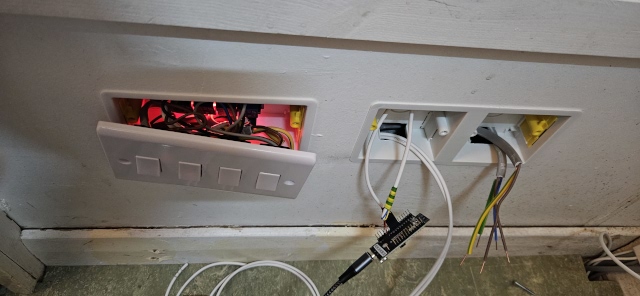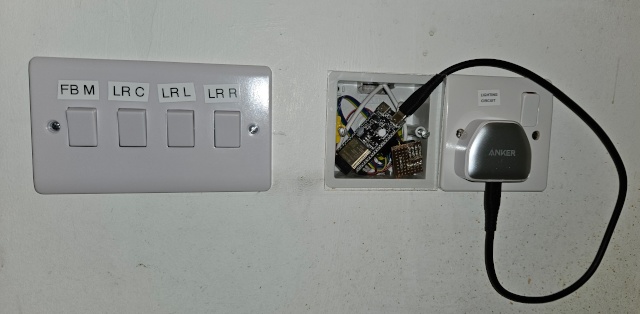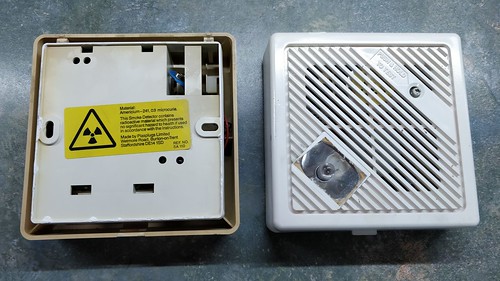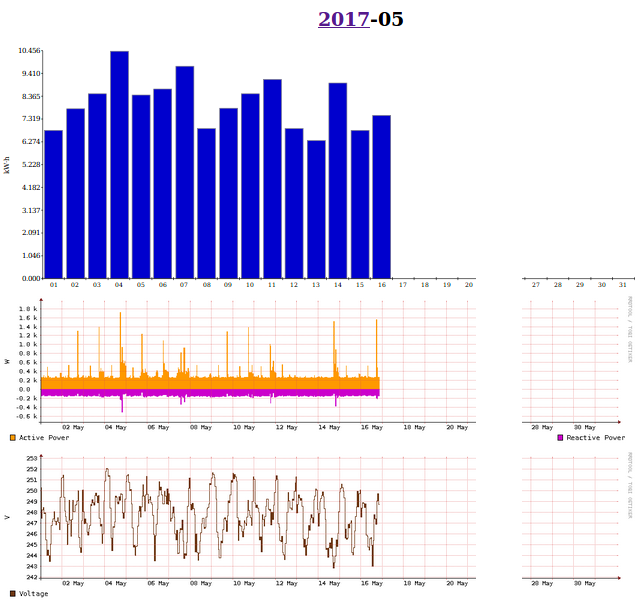With a recent oven purchase I only had one device left that required the clock to be manually synchronised - a timer that I use to turn a light on in the morning. Having had to replace some remote controlled sockets with Zigbee variants I decided to do the same with the light timer so that it can be controlled by a computer that always has the correct time.
That worked ok but I wanted more integration with the light switch and since my living room lights could already be remotely switched by a different system I have consolidated both of them into a single light controller. There aren't any existing solutions for this that can handle multiple lights and multiple switches (you can have one relay/switch, or multiple relays plus multiple switches but Zigbee doesn't guarantee good integration in that scenario).
Using an ESP32-C6 I've made my own solution, the "Candle Dribbler" that satisfies my obscure requirements for how remotely controllable light switches should behave:


![[Kitchen cabinet now 5cm smaller with doors that are too large]](/assets/2022/10/15/IMG_20220904_155234_2_t.jpg)
![[Cabinet door cut in half with 8mm steel rod as dowels]](/assets/2022/10/15/IMG_20220906_213430_2_t.jpg)
![[Kitchen cabinet with 5cm extra space to the left of it]](/assets/2022/10/15/IMG_20220907_125321_2_t.jpg)
![[Kitchen worktop leading into the dining room with a 6cm wide vent at the back of it]](/assets/2022/10/15/205_7696_2_t.jpg)
![[Kitchen worktop from above with a 6cm wide vent at the back of it]](/assets/2022/10/15/205_7707_2_t.jpg)
![[Under-counter fridge and freezer below the kitchen worktop with a 6cm vent at the back aligned to the space between the cabinets and combined width of the two appliances]](/assets/2022/10/15/205_7745_2_t.jpg)


![[Boiler with hot water pipes cut off]](/assets/2019/02/16/boiler_before.jpg)
![[Water pipe in 22mm branching off to 15mm]](/assets/2019/02/16/downstairs_before.jpg)
![[Water pipe in 15mm branching off to 15mm]](/assets/2019/02/16/downstairs_after.jpg)
![[Pipe behind shower room sink in 22mm]](/assets/2019/02/16/shower_room_sink_before.jpg)
![[Pipe behind shower room sink in 15mm]](/assets/2019/02/16/shower_room_sink_after.jpg)
![[Boiler reconnected with 15mm hot water pipe]](/assets/2019/02/16/boiler_after.jpg)
![Engraved Light Switch [White 2 gang light switch with a shower symbol engraved above the left switch and a light bulb engraved above the right switch]](https://c1.staticflickr.com/5/4701/39223123895_85ed7d5e3d.jpg)
![[Bench before starting work]](/assets/2017/09/17/20170810_204110.jpg)
![[Bottom side of the bench after partial painting]](/assets/2017/09/17/20170819_113053.jpg)
![[Seat bars after painting]](/assets/2017/09/17/20170819_113114.jpg)
![[Top side of the bench after partial painting]](/assets/2017/09/17/20170820_102454.jpg)
![[Bench outside on slabs next to the greenhouse]](/assets/2017/09/17/20171028_113100.jpg)
![[Bench leg with rubber door stop on the bottom]](/assets/2017/08/10/20170810_203003.jpg)
![[Bench outside on slabs next to the fence]](/assets/2017/08/10/20170810_203616.jpg)
![[Closed metal enclosure with electricity supply input/output cables and RS485 cable]](https://c1.staticflickr.com/3/2938/34070181472_ee98e34c1d_n.jpg)
![[Metal enclosure with lid open showing 80A and 6A circuit breakers and the Power Meter]](https://c1.staticflickr.com/3/2944/33385507294_f393083a26_n.jpg)
![[Metal enclosure with the cover off showing the circuit breakers and Power Meter]](https://c1.staticflickr.com/3/2822/33385508094_8b22c97615_n.jpg)
![[Electricity distribution board with the live supply out of the 100A isolator going via the Power Meter]](https://c1.staticflickr.com/3/2911/34227274435_b7baa8c381_n.jpg)

![[Bottom side of the bench after sanding]](/assets/2016/08/31/20160702_203247.jpg)
![[Seat bars before sanding]](/assets/2016/08/31/20160702_203317.jpg)
![[Top side of the bench after sanding]](/assets/2016/08/31/20160821_143037.jpg)
![[Bottom side of the bench after partial painting]](/assets/2016/08/31/20160825_190124.jpg)
![[Top side of the bench after completion of painting]](/assets/2016/08/31/20160831_200717.jpg)
![[Original garage roof with felt]](https://c1.staticflickr.com/1/779/21839633135_053ee4f3a2_n.jpg)
![[Garage without roof]](https://c2.staticflickr.com/6/5698/21216912644_ae850769c5_n.jpg)
![[Garage with wood roof only]](https://c2.staticflickr.com/6/5740/21839730555_1448cb2f07_n.jpg)
![[New rubber garage roof]](https://c2.staticflickr.com/6/5643/21651758230_74f6b478a3_n.jpg)


